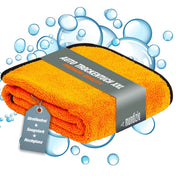Today we're continuing the last blog post. After we've already taken a closer look at the production of candles and also solved the question of materials, today we're looking at the issues of sustainability and health. As you may have noticed in some places, there are certainly controversial opinions about the sustainability and health of using certain candles. We remember that candles can be made of paraffin, stearin, beeswax, soy oil or even rapeseed oil. The extraction and origin of the raw materials have a huge influence on the sustainability of the candles.
Candles made from non-renewable raw materials and long transport routes
Paraffin is a by-product of the production of crude oil. As we know, crude oil is not a renewable resource and therefore not sustainable . In addition, paraffin must be imported and is therefore expensive. Candles made from stearin are made from vegetable and animal fats. These are renewable, but palm oil is often used. Palm oil also has to be imported to Europe and huge areas of rainforest are cleared to extract the raw material. This is why palm oil should generally be avoided.
Are candles made from soy and rapeseed oil more sustainable?
At first glance, candles made from soy oil appear to be more sustainable and also vegan. However, it must also be noted that soy wax is currently still imported from the USA . In addition, this variant is only completely sustainable if it is produced under ecological conditions and without genetic engineering . The same applies to rapeseed oil, but rapeseed is grown in Europe and in this case there is no need for long transport routes. This means that rapeseed oil from sustainable cultivation is a good choice .
Are beeswax candles a sustainable alternative?
Candles made from beeswax may be a sustainable option, as they are a 100% natural product. However, if we take a closer look at how beeswax is produced, it quickly becomes clear that a colony of beeswax has to produce beeswax for a year to produce one kilo of pure wax . This is why beeswax candles should be used less often and valued more. When buying candles, always pay attention to where the raw materials come from . Beeswax is now also imported from China or South America. This means that the natural product is not a sustainable option.
Are candles harmful to health?
Now we come to the health aspect of using candles. When candles burn, various substances that are hazardous to health can be released . Candles made from paraffin with a high sulfur content can produce sulfur dioxide when they burn. In addition to soot, carcinogenic substances are also released from the colors, varnishes and fragrances they contain. Therefore, when buying candles, look for the RAL seal of quality , which prescribes certain guidelines for the amount of ingredients. We also have a tip about tea lights. With these, it is not only important to pay attention to sustainable raw materials, but also to avoid buying tea lights with aluminum bowls, because aluminum is a valuable raw material that then "simply" ends up in the trash after the candle has burned out. An alternative to aluminum bowls can be a pretty tea light glass, which can be used again and again with a tea light without a bowl.
What sustainable alternatives are there?
There are now various sustainable alternatives to the environmentally harmful variants. Candles made from biomass, for example, are an ecological and sustainable option. It is also possible to make your own candles from candle scraps or ecological wax granules. The candle scraps can be collected and recycled. In our next article, we will show you how!




